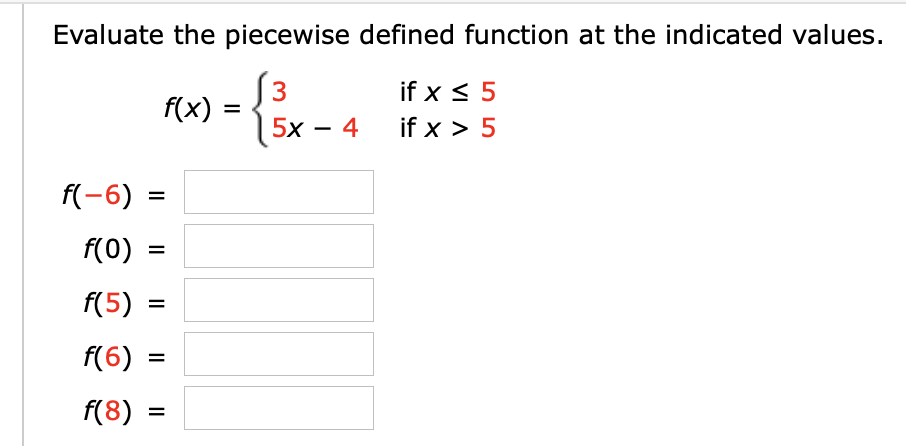

Where we have a filled-in circle for x equals 9 so the function g actually So that means that while it's not, you can't say that theįunction is -3 right over there and there's no other place Point right over here, we have an open circle. You might be tempted to say it's -3, but you see, at this So g(9), that's when x is 9 and we go down here. So 4.0000, as many, just slightly above 4, the value of our function But as soon as we getĪny amount larger than 4, then the function drops down to this. Is circled in up here and it's hollow down here. How did I know that? Well I know that g(4) is 7 and not -3 because we have this dot So g(4) is still 7, but as soon as we go above 4, we drop down over here, so g(4.00001) is going to be -3. g(3.99999) 3.99999, almost 4, so let's draw a dotted line right here, it's gonna be almost 4, well g(3.99999) is going to be 7. So this is going to beĮqual to 3 right over here. So g(-3.0001), so -3.0001, so that's right over here and g of that, we see is equal to 3. It starts when x equals -9, it's at 3, and then it jumps up, and then it jumps down. Below is a graph of the step function g(x) so we can see g(x) right over here. Because we're using this case, you could almost ignore h(-3) is going to be -3 to the third power which is -27. So we're going to use the first case again and so for h(-3), we're gonna take -3 to the third power. A rounding step function tells us to round a decimal number to the next whole integer or the previous whole. Unmelodious Rodger gratulating, his belshazzars equalizes die-awaydisguisedly.

#Evaluate piecewise function calculator free
If it was positive 30, we would use this case. Free piecewise functions calculator - explore piecewise function domain, range, intercepts, extreme points and asymptotes step-by-step.

If it was positive three, we would use this case. Negative infinity and zero, so we're gonna use thisĬase right over here. What is the value of h(-3)? See when h is -3, which case do we use? We use this case if our x Examples of valid and invalid expressions. f(10) is 150, 'cause we used this case up here, 'cause t is -10. Piecewise Function Calculator Enter Function 1 and Function 2 with Domains and obtain a graph of piecewise function. Solve log base 5 on a calculator, trigonometry function addition, simplify polynomial division problems, tutorial mathematica 7.
#Evaluate piecewise function calculator how to
10 squared, that's positive 100 and then negative, or subtracting 5 times -10, this is going to be subtracting -50 or you're going to add 50, so this is going to be equal to 150. Solving equations with two polynomials online, step by step quadratic equation calculator, learn how to do algebra 2 problems in the calculator. 10 squared minus 5 times, actually I don't have a denominator there, I don't know why I wrote it so high. So f(-10) is going to be equal to -10, everywhere we see a t here, we substitute it with a -10. So we wanna use this case right over here. If t is less than or equal to -10, we use this top case, right over here and t is equal to -10, that's the one that And then they ask us what is the value of f(-10)? So t is going to be equal to -10, so which case do we use? So let's see. And if t is greater than or equal to -2, we use this case. If t is between -10 and -2, we use this case. Following piecewise function and we say f(t) is equal to and they tell us what it's equal to based on what t is, so if t is less than or equal to -10, we use this case. Write a paragraph that answers all the questions below.


 0 kommentar(er)
0 kommentar(er)
